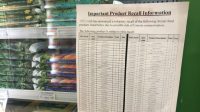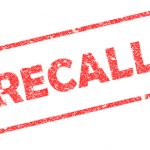Retailer Point of View

“How should suppliers support retailers during recalls? With speed and transparency,” says Chuboff. Today’s retailer product response systems enable stores to remove all affected product in as little time as possible. The systems are designed to account for every unit of an affected product, both by physical count of items on hand and through electronic sales tracking, for reporting to the proper regulatory authorities. Beyond web and social media posts, retailers with customer loyalty program databases can take advantage of such lists to alert customers directly regarding recalls of affected products.
In-store notification procedures include audible alerts to inform associates, lock-outs for affected items at point of sale, and electronic signage and bold notification posters displaying clear recall information for consumers and employees. Retailers emphasize their need to provide maximum assistance to their customers, store employees and regulatory officials in the event of a recall.
Communication, Communication, Communication
The lynchpin to the entire recall process is transparent communication. Both suppliers and retailers should continually monitor and update their contact information databases. Food safety officers on both sides should seek to network and share their own best practices. When alerting retailers of a recall, suppliers must be certain that their communication is completely accurate regarding specific product descriptors, including brand and generic names, lot and unit numbers, dates of manufacture, etc. When retailers receive customer complaints that could result in the need for a recall, precise communication in the other direction is just as crucial. Most importantly, communications must be timely. Every hour is critical in the event of a dangerous contaminant or pathogen. And while updates must be communicated when necessary, partners must avoid the “rolling recall” conundrum in which partial information drips out to affected parties.
The supplier/retailer partnership is more than a mere business relationship. The production and delivery of safe, quality food is very literally in these companies’ hands. Every effort must be made not to violate that trust. And when the key to ensuring the safety of the food supply and the public comes down in part to something as fundamental as effective and efficient communications, such practices must be enthusiastically embraced.
References
- Kowitt, B. (May 6, 2016). “Why Our Food Keeps Making Us Sick.” Fortune. Retrieved from http://fortune.com/food-contamination/
- Tarrant, J. (June 6, 2007). “Consumer Concern Over Product Recalls High.” Harris Interactive. Retrieved from http://media.theharrispoll.com/documents/Harris-Interactive-Poll-Research-Crisis-Food-Recalls-2007-06.pdf
- Chuboff, L. (June 10, 2015). “How to Make Your Retailer Happy.” SQF Institute. Retrieved from http://www.mapyourshow.com/MYS_Shared/fmi15/handouts/Brand%20Bites%20How%20to%20Make%20your%20Retailer%20Happy.pdf








